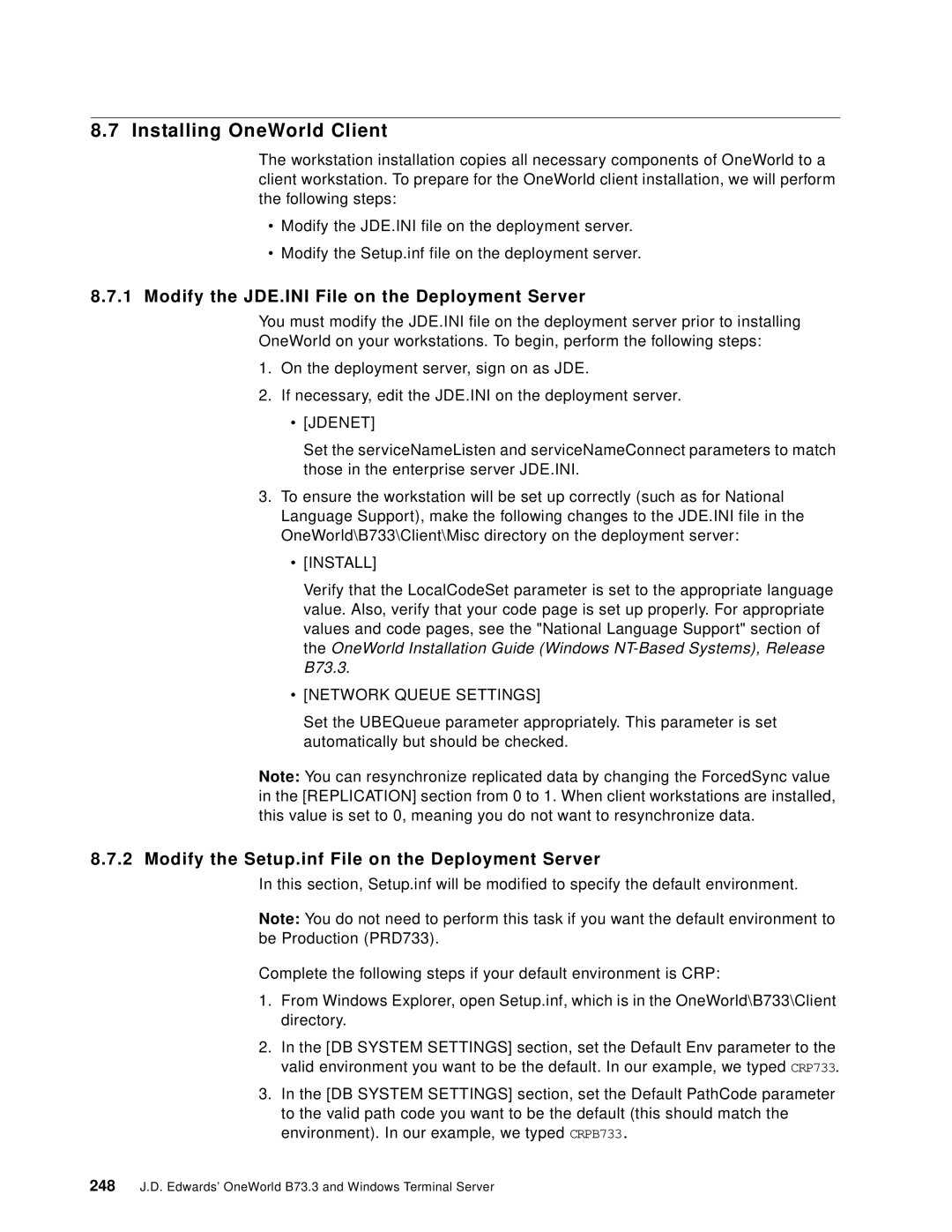8.7 Installing OneWorld Client
The workstation installation copies all necessary components of OneWorld to a client workstation. To prepare for the OneWorld client installation, we will perform the following steps:
•Modify the JDE.INI file on the deployment server.
•Modify the Setup.inf file on the deployment server.
8.7.1Modify the JDE.INI File on the Deployment Server
You must modify the JDE.INI file on the deployment server prior to installing
OneWorld on your workstations. To begin, perform the following steps:
1.On the deployment server, sign on as JDE.
2.If necessary, edit the JDE.INI on the deployment server.
•[JDENET]
Set the serviceNameListen and serviceNameConnect parameters to match those in the enterprise server JDE.INI.
3.To ensure the workstation will be set up correctly (such as for National Language Support), make the following changes to the JDE.INI file in the OneWorld\B733\Client\Misc directory on the deployment server:
•[INSTALL]
Verify that the LocalCodeSet parameter is set to the appropriate language value. Also, verify that your code page is set up properly. For appropriate values and code pages, see the "National Language Support" section of the OneWorld Installation Guide (Windows
•[NETWORK QUEUE SETTINGS]
Set the UBEQueue parameter appropriately. This parameter is set automatically but should be checked.
Note: You can resynchronize replicated data by changing the ForcedSync value in the [REPLICATION] section from 0 to 1. When client workstations are installed, this value is set to 0, meaning you do not want to resynchronize data.
8.7.2 Modify the Setup.inf File on the Deployment Server
In this section, Setup.inf will be modified to specify the default environment.
Note: You do not need to perform this task if you want the default environment to be Production (PRD733).
Complete the following steps if your default environment is CRP:
1.From Windows Explorer, open Setup.inf, which is in the OneWorld\B733\Client directory.
2.In the [DB SYSTEM SETTINGS] section, set the Default Env parameter to the valid environment you want to be the default. In our example, we typed CRP733.
3.In the [DB SYSTEM SETTINGS] section, set the Default PathCode parameter to the valid path code you want to be the default (this should match the environment). In our example, we typed CRPB733.
